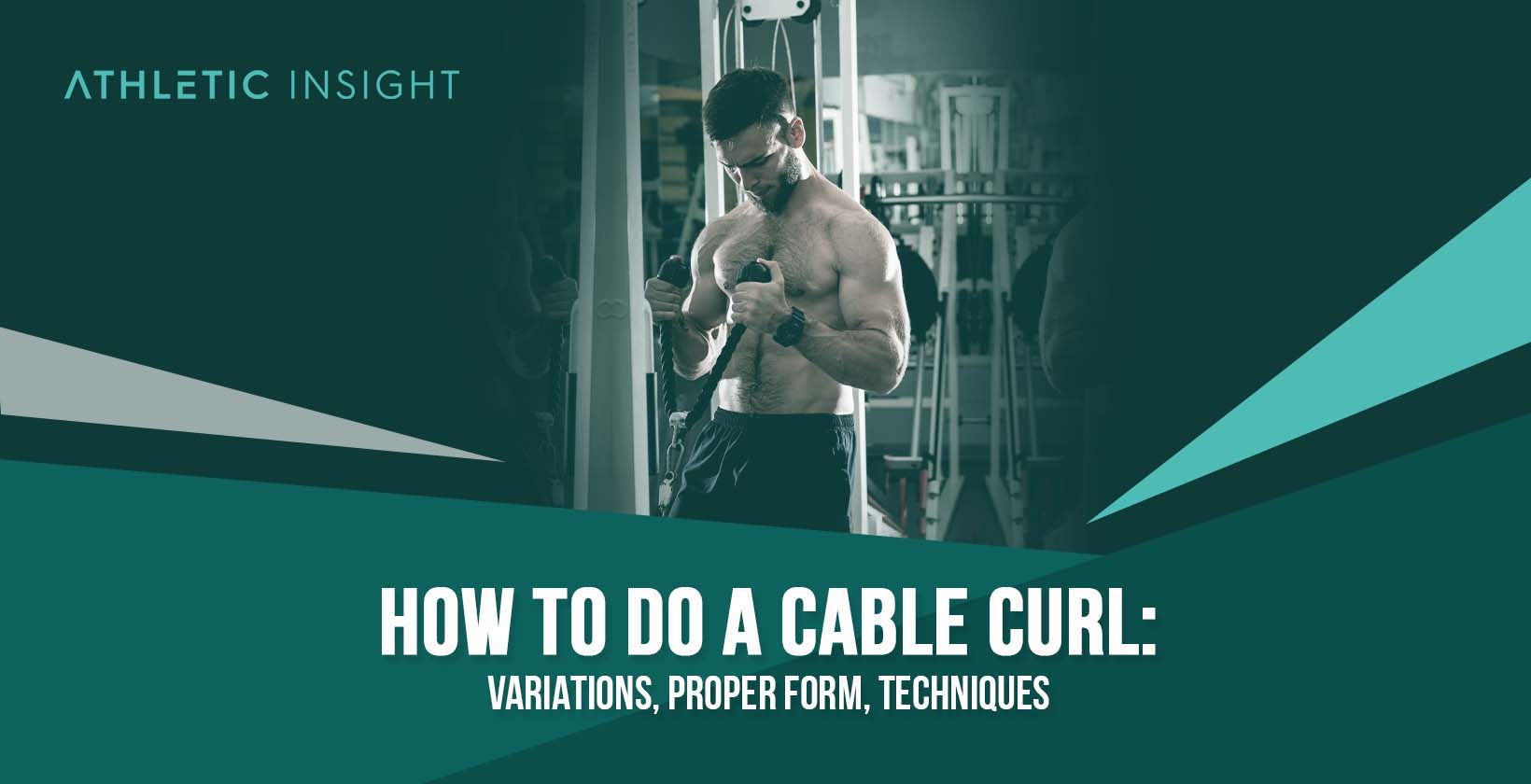The cable curl is an isolated movement working the biceps brachii, brachialis, forearm even works your core muscles. Instead of using a dumbbell or barbell, a cable bicep curl utilizes the cable machine to mimic the curling motion, isolate the biceps and build more muscle.
While the cable curl requires expensive machinery to perform, there are several benefits to this exercise that makes it a crucial lift. These benefits are that it specifically targets the biceps brachii, stabilizes your upper body, gives you fast and defined results in your bicep, and adds variety to doing this exercise.
Cable curls are most effective with proper form. In order to perform the cable curl with perfect form, you need your knees slightly bent, feet firmly planted on the ground and your stomach muscles braced for the pulling motion. Keeping a straight back for the movement, with your head steady and eyes forward, will get you the most out of this exercise.
Similar to the barbell and dumbbell curl, the cable curl has many variations as well. While the standing cable curl, cable curls with rope, and one-arm cable curls are most common, these variations will help change up your routine. These cable curl variations include the Standing One-Arm Cable Curl, Reverse Grip Cable Curl, Cable Rope Hammer Curl, High Cable Curl, Lying Cable Curl, and the Cable Preacher Curl
It’s essential to avoid common mistakes that might lead to injury, like slouching or failing to tighten your abdominal muscles. To master the cable curl, you must understand the basic cable curl techniques that we will discuss.
How to Perform Cable Curl with Proper Form?
Whether you’re doing standing cable curls or rope curls, having proper form is the best way to maximize the exercise and genuinely isolate the biceps brachii.

Proper form is crucial for biceps exercises. Keeping your back straight, your knees bent, and your muscles engaged will help you get the most out of the cable curl.
Make sure your arms are straight at the bottom of the curl and that you hinge at the elbow without swinging your forearms up to complete the exercise. The brachialis, the muscle used primarily for elbow flexion, benefits significantly from the bicep cable curl.
Keeping your abdominal muscles engaged throughout the exercise will increase stability and give you a better result. The bicep curl muscle, the biceps brachii, should contract as you pull the bar up.
Make sure to keep a firm grip on the bar throughout the movement. Keep your elbows steady and close to the sides as you pull the bar up from the resting position. Bring it up to your chest, squeezing your biceps at the peak.
The squeeze and hold at the top of the cable bar curl are critical to the movement. Keep your muscles engaged and steady when you return to the starting position. Understanding these basics is a great place to start.
- Place a straight bar accessory onto bottom attachment
- Stretch your arms to grab the straight bar attachment
- Walk back slightly from the pulley
- Hold the bar underhand
- Maintain a shoulder-width distance between your feet
- Keep the bar between your thighs
- Bend at the elbows
- Pause at the peak
- Return the bar to the start position calmly
1. Place a straight bar accessory onto bottom attachment
First, place a straight bar accessory onto the bottom attachment. While there are variations you can perform with different angles and different bar attachments, the straight bar coming from the lowest spot on the ground is the most common form.

2. Stretch your arms to grab the straight bar attachment
Stretch your arms to grab the straight bar attachment. This simple step will let you feel the weight resistance on the machine before you begin. If the weight feels heavy pulling the cable upwards, it will be too much weight to curl. If the weight is too much, place the bar on the ground and set the correct weight. If the weight feels adequate, move on to the next step.
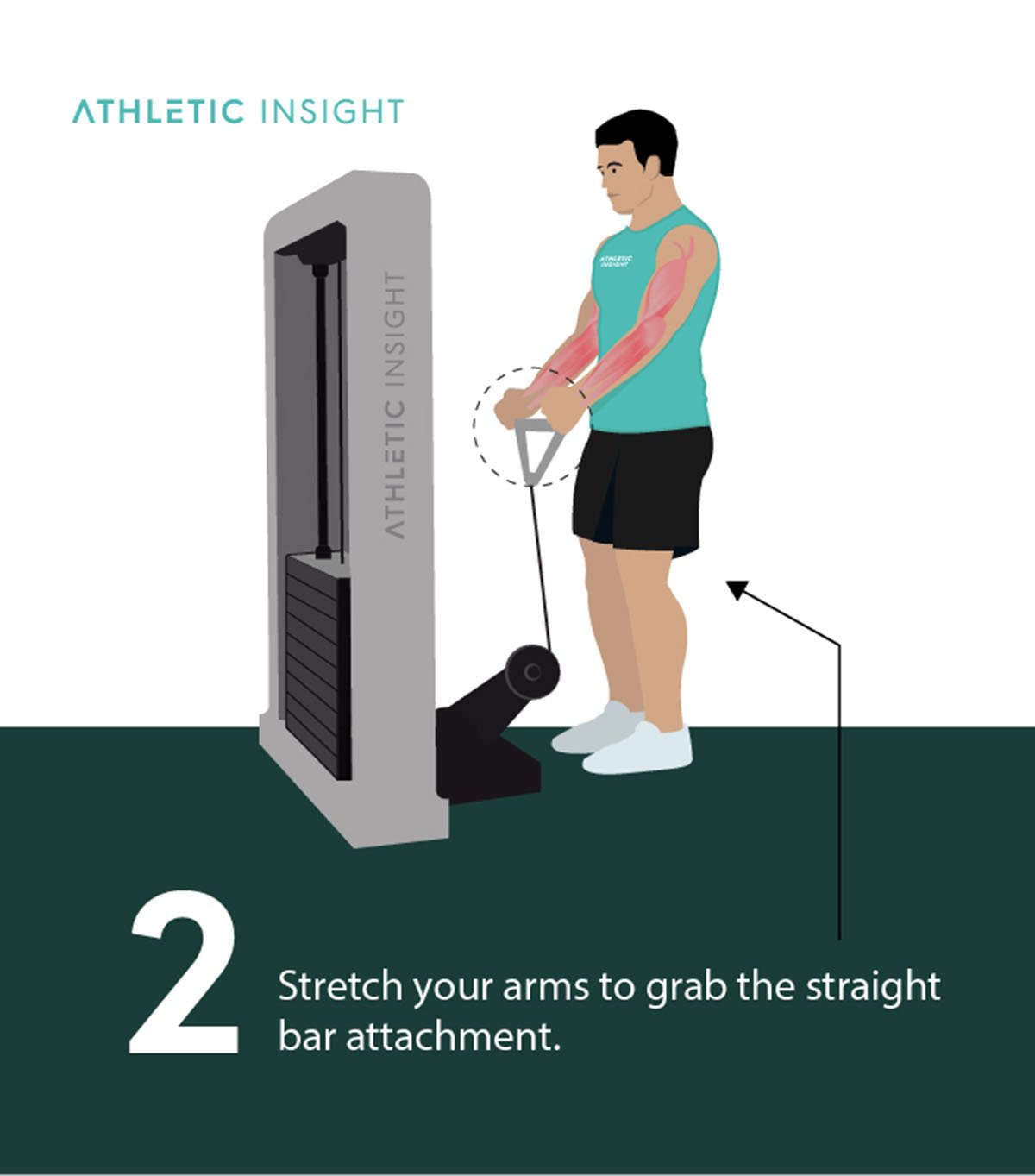
3. Walk back slightly from the pulley
Slightly walk backwards, ensuring you have room to complete the muscle contraction. Walking backwards will also allow for you to tighten up any remaining slack on the cable which will help with the movement. Be sure not to walk back too far as most cable machines have a maximum distance it can extend.

4. Hold the bar underhand
The traditional cable curl involves having the hands under the car with palms facing up. If you place the palms down, you are performing a reverse grip variation which also can be done. If you are not using a straight bar, you may find your grip and hand position slightly different like the image shown.
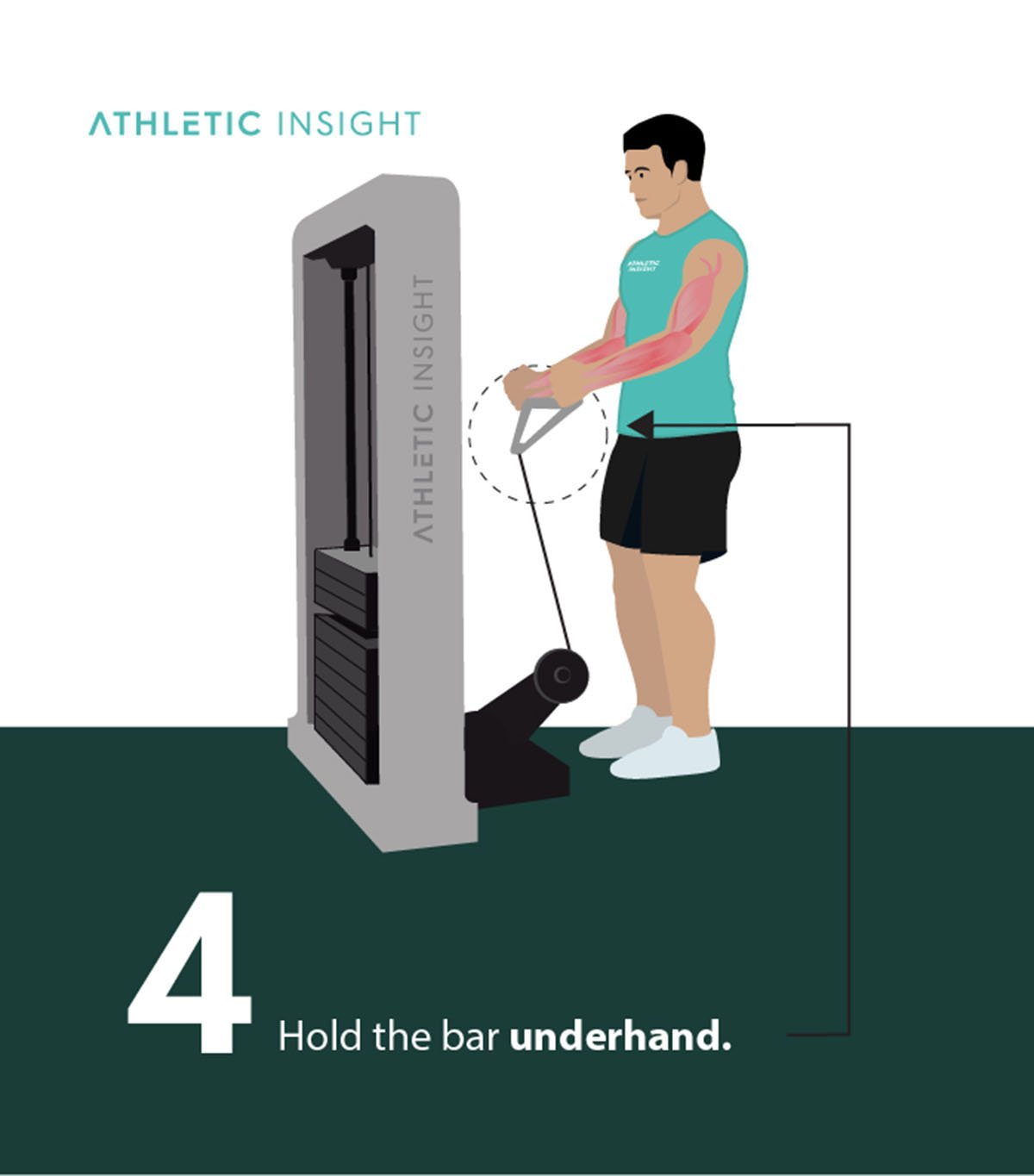
5. Maintain a shoulder-width distance between your feet
To ensure proper balance, one should stand with their feet shoulder-width apart. You may find that you prefer a wider or narrower stance, but it is recommended to first try a neutral stance when starting out.

6. Keep the bar between your thighs
Since the cable is attached to the bar, you’ll want the weight to be positioned equally on both sides which is why you want the cable and bar positioned equally between your thighs. If you feel the bar pulling more on one side or the other, you may not have proper positioning.
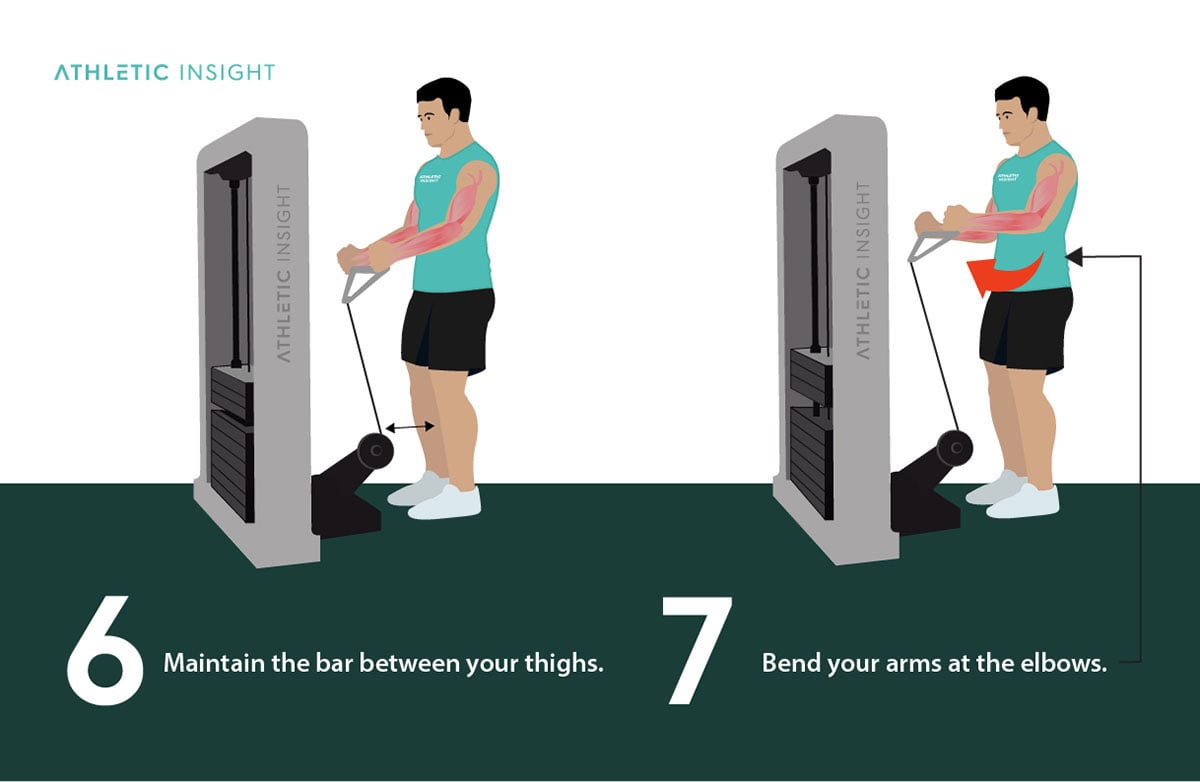
7. Bend at the elbows
Once ready to start the lift, bend your elbows to begin the concentric portion of the exercise. Similar to any curl, the elbow should remain in place, only moving where the socket pivots.
8. Pause at the peak
At the top of the cable curl muscle movement, you should pause for a moment. This pause can be for just a split second, or as long as desired. The pause is where you should squeeze your biceps. This contraction will help with the overall development of the biceps.
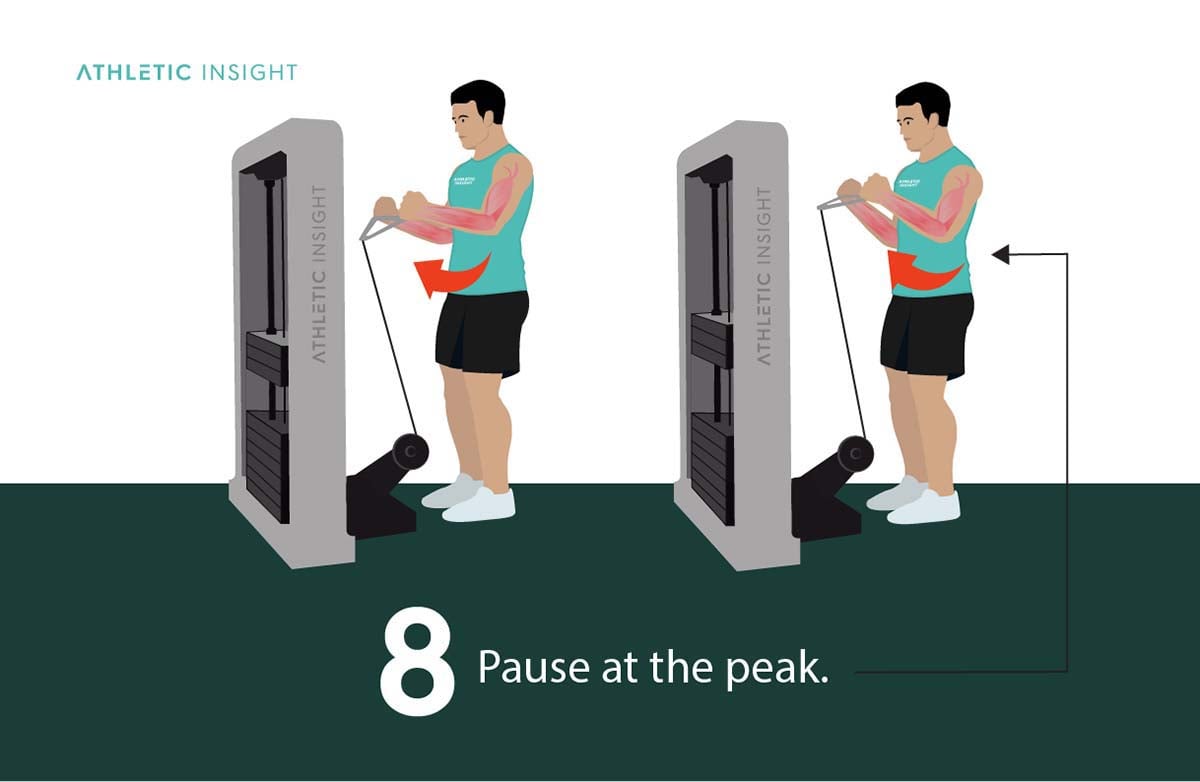
9. Return the bar to the start position calmly
Lastly, return the bar to the starting position is a calm and controlled manner. If you need to go for explosive power, you should perform a biceps curl with free weight since the cable machine is not meant to handle quick movements as the cable may become loose or snap.

What are the Benefits of Cable Curl?
Going in to exercise with no idea why specific movements matter will ultimately kill your motivation to exercise. Understanding the benefits of the cable curl will help you focus and perform at a higher degree of efficiency in the gym.
There are four significant benefits to the cable curl.
- Targets specifically the biceps brachii.
- Stabilizes your upper body.
- Gives you fast and defined results in your bicep.
- Adds variety to doing this exercise.
What are the Mistakes for Cable Curl Form?
Cable curls are a highly effective form of exercise. The cable machine creates resistance that works the biceps in an isolated manner. As a smaller muscle, the biceps brachii benefits greatly from concentrated attention.
While incredibly effective, there are a few common cable curl mistakes to avoid while performing cable curls.
- Flaring elbows: this unnecessarily sends a force to other muscles and fails to isolate the biceps brachii.
- Straight knees: forgetting to bend your knees could force you to rock your body and rely more on momentum than muscles to get each rep.
- Limp wrist: focus on keeping your wrists stable and slightly flexed, or you could risk severe injury.
- One movement: repeating the same form of cable curl without variation could lead to injury in the elbow, and neglecting accessory muscles could result in loss of overall strength.
- Narrow stance: keeping your feet about a shoulder-width apart will help properly disperse the weight and give you a greater range of motion throughout the movement.
How to Determine Proper Weight for Cable Curl?
If cable curls are new to your exercise routine, then starting with low weight and working your way up is an excellent way to determine how much weight you can handle at the beginning.
For beginning male lifters, a good starting weight is usually between 25 and 30 pounds. At this level of weight, there is enough resistance without the risk of injury. More experienced weightlifters can average around 119 pounds for a bicep curl.
For female lifters, a good starting weight starts around 13 to 15 pounds. While this sounds low, it is a good place for beginning female weightlifters. On average, an experienced weightlifter should curl about 66 pounds.
Beginning at one of these will offer a base for understanding how much weight provides a good workout without ruining form or risking injury.
If you begin to feel strain or unnecessary pain at any point during an exercise, you should stop immediately and try lowering the weight. Your elbows are especially at risk while performing the bicep cable curl.
Which muscles are involved while performing Cable Curls?
The cable curl is considered one of the most effective bicep workouts. It activates several essential muscles, not just the biceps brachii.
- Biceps brachii
- Brachialis
- Abdomen
- Forearm flexors
- Brachioradialis
While the bicep cable curl primarily targets the bicep muscles, the forearm also receives a good workout. The pulling motion of the straight bar or cable rope bicep curl engages all the muscles in the forearm. Having a strong grip plays a role in this as well.
What are the Cable Curl Variations?
The rope cable curl is possibly the most popular. The one-arm cable curl engages one bicep at a time for a deeper burn.
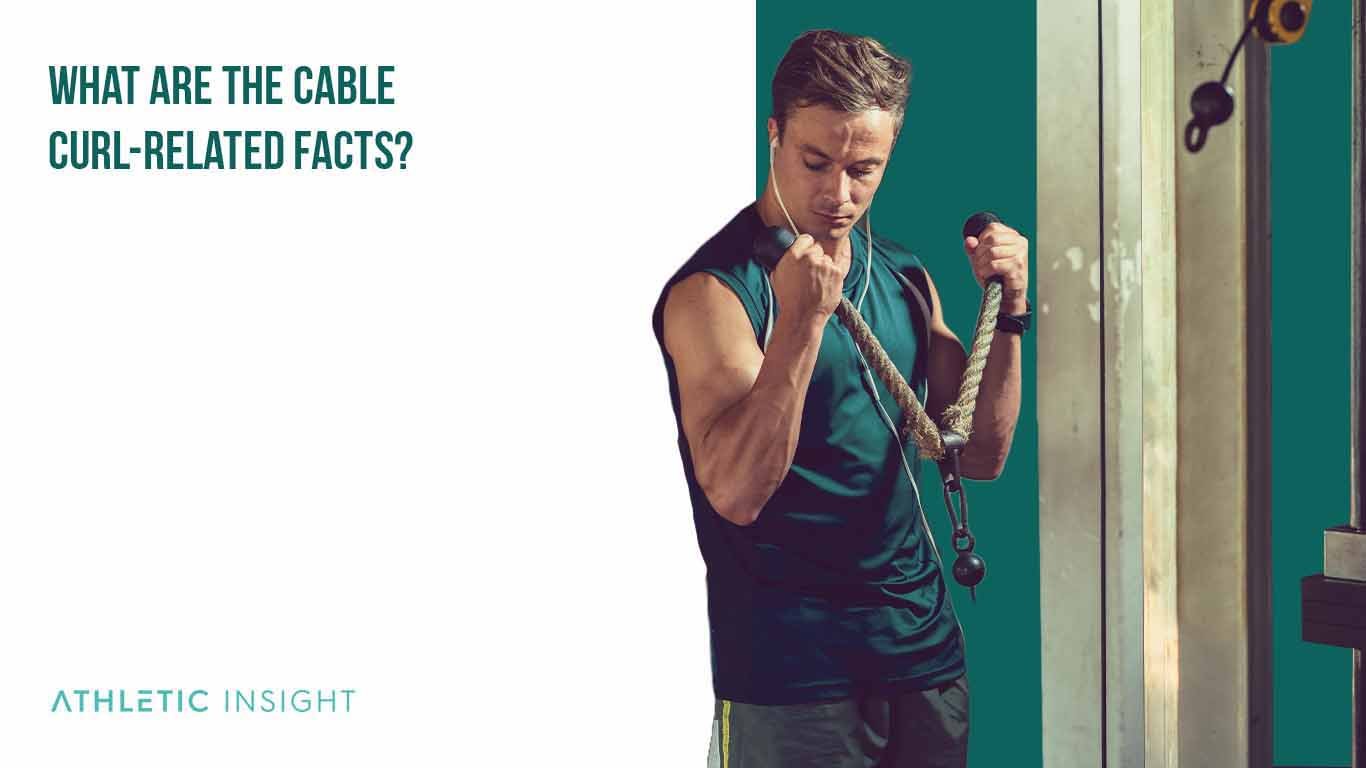
There are many variations and alternatives to the cable bicep curl that can be equally effective. Each variation engages the biceps and accessory muscles, like the abdomen and the forearm flexors, to create greater strength. These variations are essential for overall health benefits and better performance in the gym.
Here is the most popular cable curl variations list.
- Standing One-Arm Cable Curl
- Reverse Grip Cable Curl
- Cable Rope Hammer Curl
- High Cable Curl
- Lying Cable Curl
- Cable Preacher Curl
Cable curl variations are particularly effective in isolating the bicep and surrounding muscles. Cable rope curls are particularly useful for developing forearm strength. Reverse grip cable curls are highly effective in building bulk in the biceps.
What are the Necessary Pieces of Equipment for Cable Curl?
Bicep curls on the cable machine can provide different grip options with various equipment, such as the straight bar or the rope.
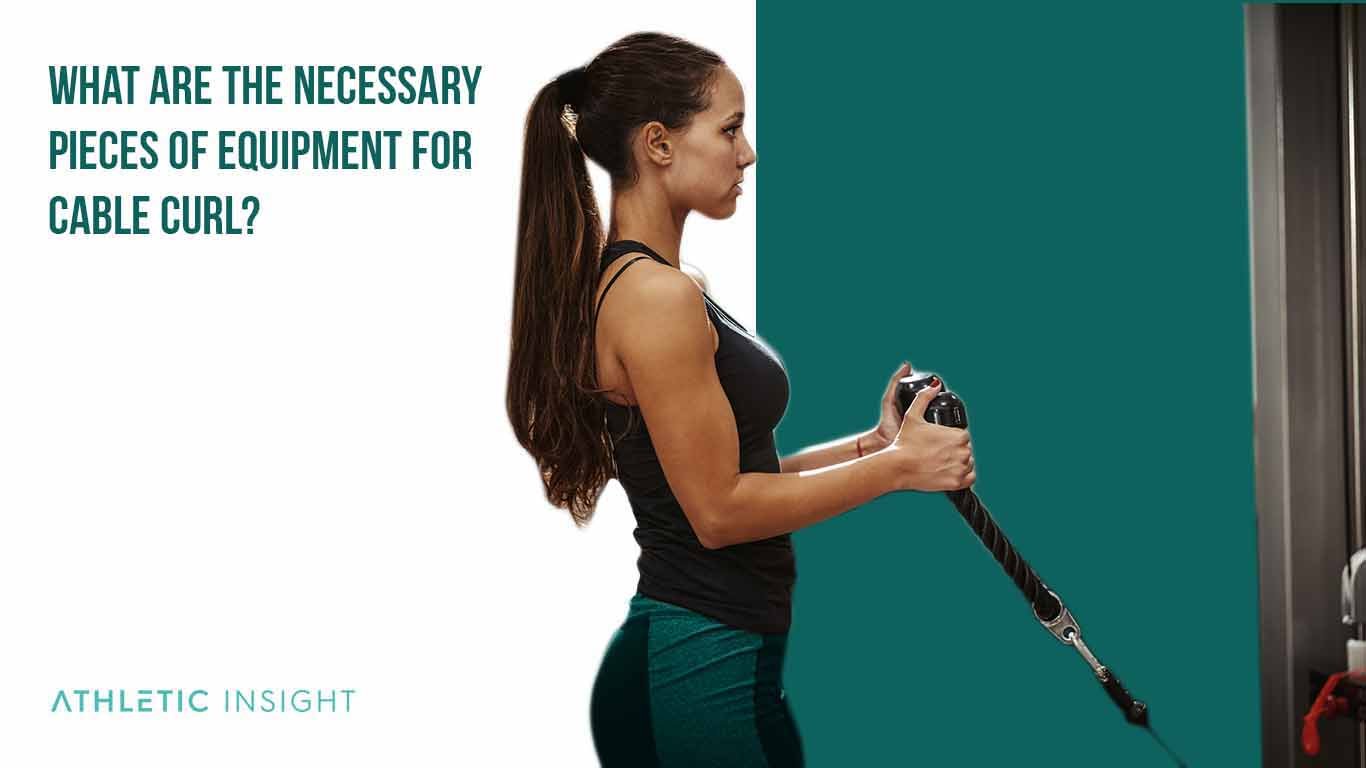
The cable curls require standard cable machine equipment.
- Straight bar
- Rope
- Pull handles
What are the Cable Curl-Related Facts?
Cable bicep curls are known for several reasons.
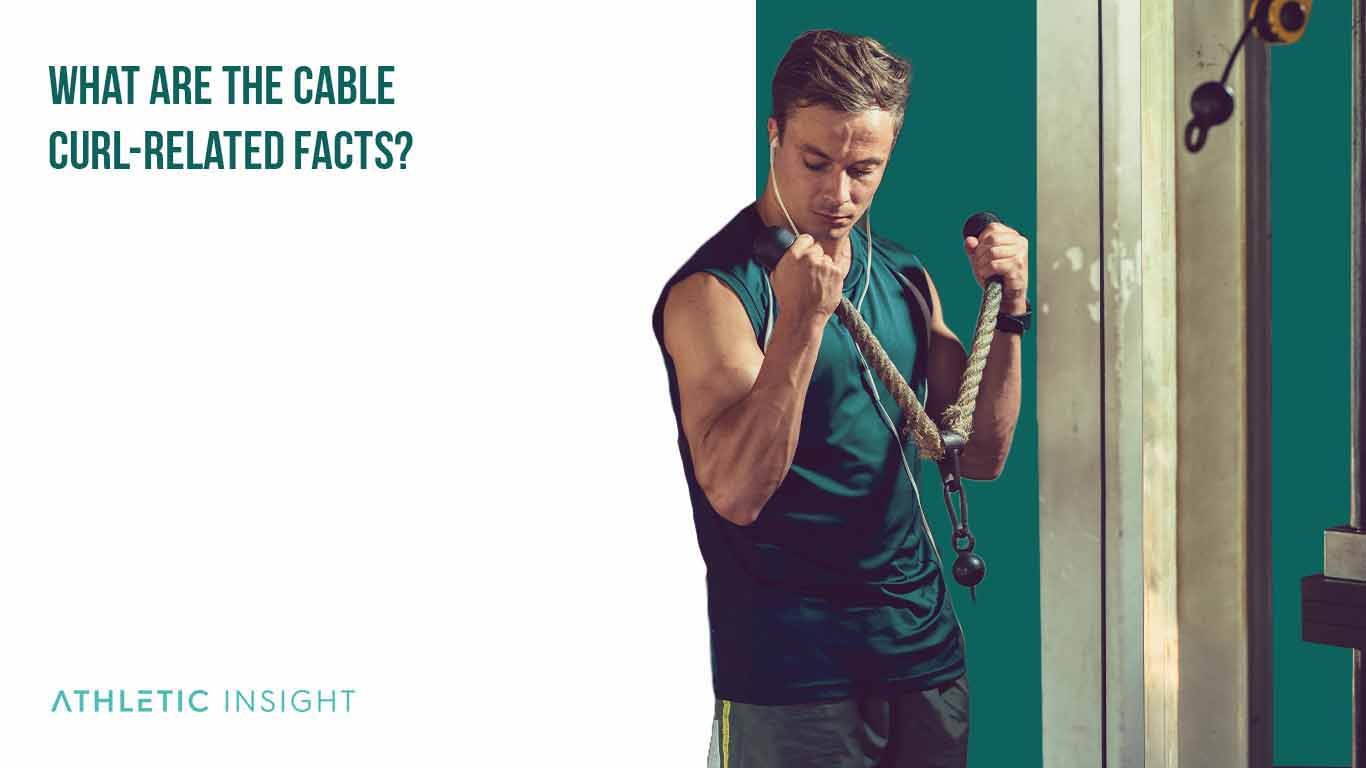
- They are considered the most effective way to increase bicep strength.
- Bicep curls work best when used in conjunction with other basic workout movements.
- The cable bicep curl provides constant tension.
- Bicep cable curl variations can bring variety to a workout.
Does Cable Curl affect the mood?
Since heavy weight lifting can impact hormone levels (mainly testosterone), curling heavyweights on the cable machine can release endorphins, making you feel happier or more energetic.
Is Cable Curl practiced within CrossFit?
Yes, CrossFit uses cable curls and cable curl variations. While CrossFit workouts tend to prefer fewer isolated movements, the cable curl has become a prominent exercise within the community.
Is Cable Curl a military movement?
No, the cable curl is not a military exercises. Machine cable curls are not as prominent in the military as standard curls with dumbbells or barbells.
Is Cable Curl essential?
While not essential, the cable curl is an excellent addition to any upper body workout routine. Resistance training in various forms will help build muscles and increase strength in new ways.
Is Cable Curl an Olympic lift?
No, the cable curl is not an Olympic lift. Olympic lifting uses the Snatch and Clean and Jerk; both are performed with a weightlifting.

